World Down Syndrome Day: History, Meaning and Celebration
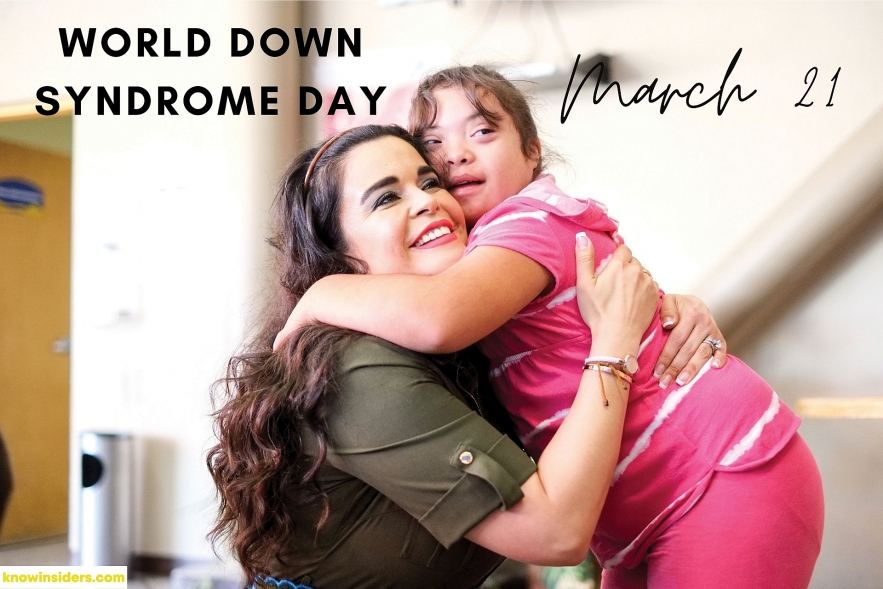 |
| World Down Syndrome Day (March 21): History, Meaning, Celebration. Photo KnowInsiders |
On this day, people all around the world celebrate the lives and achievements of people with Down syndrome. March 21st provides an opportunity to raise awareness about the rights and inclusion of people with Down syndrome around the world.
What is Down Syndrome?
Down syndrome occurs when an individual has an extra partial (or whole) copy of chromosome 21. It is not yet know why this syndrome occurs, but Down syndrome has always been a part of the human condition. It exists in all regions across the globe and commonly results in variable effects on learning styles, physical characteristics and health.
Adequate access to health care, to early intervention programmes, and to inclusive education, as well as appropriate research, are vital to the growth and development of the individual.
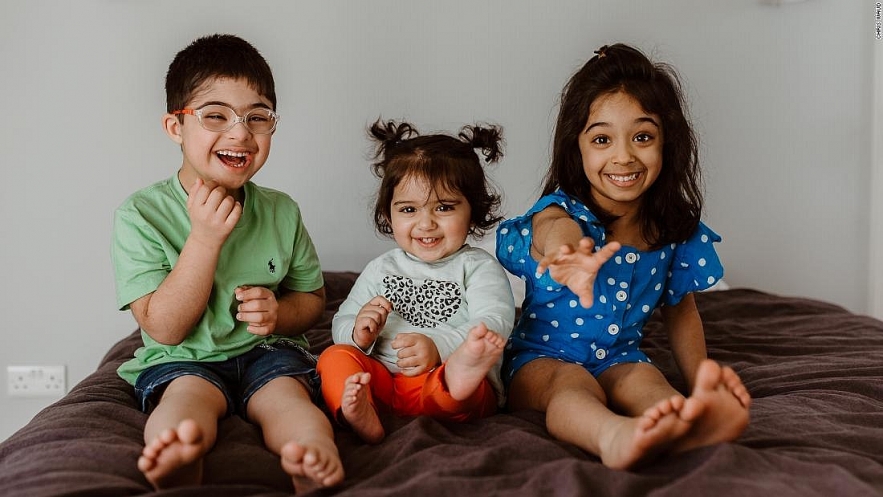 |
| Photo CNN |
| Characteristics in Individuals with Down syndrome: Individuals with Down syndrome have varying degree of cognitive delays from very mild to severe, decreased muscle tone, small nose and flat nasal bridge, eyes slanting up, irregular shaped ears, ability to extend joints beyond the usual, large space between the big toe and its neighbouring toe, large tongue relative to the mouth. Children with Down syndrome can be affected by various defects such as congenital heart diseases, hearing loss, eye problems. Down syndrome occurs in people of all race and economic status. A child with Down syndrome can be born to a mother at any age, although the risk of Down syndrome increases with age of mother. A 35 year old woman has about one in 350 chance of conceiving a child with Down syndrome and chance increases to1 in 100 by age of 40. |
What is World Down Syndrome Day?
In December 2011, the General Assembly declared 21 March as World Down Syndrome Day (A/RES/66/149). The General Assembly decided, with effect from 2012, to observe World Down Syndrome Day on 21 March each year. In order to raise public awareness of Down syndrome, the General Assembly invites all Member States, relevant organizations of the United Nations system and other international organizations, as well as civil society, including non-governmental organizations and the private sector, to observe World Down Syndrome Day in an appropriate manner.
History of World Down Syndrome Day
Since 2006, Down Syndrome International has promoted World Down Syndrome Day to encourage people with Down Syndrome to help raise awareness about the condition. The United Nations General Assembly declared March 21st as World Down Syndrome Day in December 2011. Each year, the organization creates a theme. Past themes have included:
2020 – We Decide
2019 – Leave No One Behind
2018 – What I Bring To My Community
2017 – My Voice My Community
Significance of World Down Syndrome Day
It promotes awareness
Down Syndrome effects approximately 400,000 families in the United States alone. World Down Syndrome Day helps educate the public on what Down Syndrome is and how to encourage those with Down Syndrome to participate in daily activities so they can live a full life and play a vital role in their community.
It empowers people with Down Syndrome
The accomplishments and contributions of people with Down Syndrome are often overlooked. However, this event highlights the positive difference they make in their community and gives them the recognition they deserve.
It helps raise money for research
Each year, one in 700 babies in the United States is born with Down Syndrome. However, the cause is still unknown. By donating to Down Syndrome charities, you’re having an impact on those currently living with Down Syndrome and helping get one step closer to finding the cause.
What do we do on World Down Syndrome Day?
Check to see if your local school is offering any volunteer opportunities in their Integrated Learning Center. Join local events or share yours. Other ways you can participate include:
1.Incorporate blue and yellow
As the designated colors of the cause, blue and/or yellow should be utilized on World Syndrome Day. You can show your support by wearing something blue or yellow, icing cupcakes with blue and yellow frosting for schools, decorating an office with blue and yellow flowers or balloons, or filling bowls with blue and yellow M&Ms—it doesn’t matter how you rock these colors, just be sure you do.
2.Create a video based on this year’s theme
Write or record something
Why not make a video and upload it to DownTV? Or write about what #InclusionMeans to you in a blog?
Volunteer to speak at your school about Down syndrome and share your experiences.
Create opportunities in your community that will encourage advocacy and empowerment.
3.Get informed
Learn about Down syndrome from people with Down syndrome. Share your new knowledge with your friends, family and colleagues.
4.Share your story
The best way to promote awareness of Down syndrome is for people with Down syndrome to share their own stories in their own words.
5. Take the Generation G Pledge: to always be accepting, be kind and be generous!
I accept you as you are
I choose to be better every day
I will fight for you and have your back
I will be generous with my time and my heart
I will be heroic and speak up if someone needs help
I will invite 21 people to join Generation G
I will make Generation G a part of my life
Write a “G” inside a heart on the palm of your hand to show the world your pledge. Encourage friends, family, coworkers and students at your child’s school to also take the pledge
6. Rock your Socks!
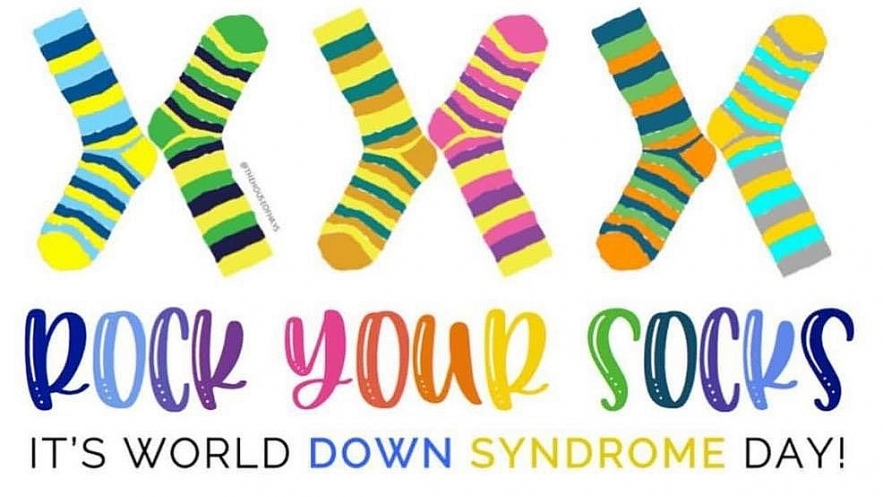 |
| Photo Twitter |
Encourage friends, family, classmates and coworkers to rock their silliest and most mismatched socks as a way of raising awareness for WDSD. You can purchase inexpensive brightly colored socks at Target for your family and friends.
Some believe socks are shaped like chromosomes, which led to the “Rock your socks” or #LotsofSocks initiative from Down Syndrome International (DSI). This campaign launched in 2013 and, according to DSI, promotes the idea we’re not so different. Mismatched or not, it doesn’t matter what the socks look like, they are both socks. Sure, there are some differences, but ultimately they are the same, just like people with and without Down syndrome.
“My daughter’s teacher heard about [‘rock your socks’] and she and my daughter decided to make it a school-wide thing at her middle school on 3/21. My daughter did a morning announcement and it was a huge success and everyone loved it and wants to do again this year. My daughter was thrilled and very proud.” — Elizabeth B.
7.Read a book about Down Syndrome at school
 |
| touch type read and spell |
If you have a younger child with Down syndrome, ask your child’s teacher or principal if you can read a book to the class during story time. It may be a great way to celebrate and educate children about Down syndrome. You may even ask if there are other classes that would enjoy having you read a story for WDSD.
“My favorite thing we’ve ever done is donate a book to my daughter’s elementary (she was in high school) and then reading to the little children.” — Jawanda M.
“We are going to school to read to [my daughter’s] second grade class and doing random acts of kindness.” — Jodi A.
| Some book recommendations: “47 Strings: Tessa’s Special Code” by Becky Carey “My Friend Isabell” by Eliza Woloson “My friend Has Down Syndrome” by Jennifer Moore-Mallinos “What’s Inside You Is Inside Me, Too: My Chromosomes Make Me Unique” by Deslie Webb Quinby and Jeannie Visootsak, MD |
8. Donate a book to the classroom or library
Perhaps you know of a group, daycare, office or classroom that could benefit from having books on Down syndrome. You could even donate books to waiting rooms in offices that typically have magazines like the doctor’s office. It is a great way to celebrate the day and let the recipients know you are doing it in honor of WDSD to raise awareness and promote kindness and understanding.
“I give away books to local waiting rooms (doctor, dentist, therapy) that are about Down syndrome or feature children with Down syndrome in them.” — Erin S.
If you are wondering what books would be helpful, here is a list of nine great children’s books about Down syndrome or this comprehensive list of some of the best Down syndrome book resources. (Lists shared with permission from author).
9. Get political
Many Down syndrome organizations work tirelessly to create policies that directly impact and benefit the lives of individuals with Down syndrome. Issues such as minimum wage, job opportunities, social security benefits and education are important in our community. This day can be an opportunity to bring some of those issues to light.
“We are sending socks and a fact sheet to all our state senators,” said Sarah Curfman, executive director of the Down Syndrome Association of Minnesota. “We are asking them to wear the socks, make themselves familiar with our issues (on the fact sheet) and join us (and their constituents) at our Step Up Walk in September. [We are] posting it online and asking our members to tag their senator.”
“This year I’m going to the state capitol for a proclamation.” — Jawanda M.
 Canavan Disease: Symptoms, Causes, Diagnosis and Treatment Canavan Disease: Symptoms, Causes, Diagnosis and Treatment Canavan disease is a hereditary condition that prevents the brain’s nerve cells (neurons) from properly sending and receiving information. What Is Canavan Disease and How ... |
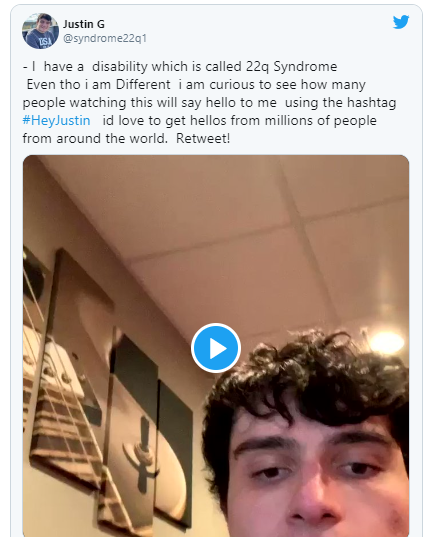 22q11.2 Deletion Syndrome: Symptoms, Causes, Diagnosis, Treatment 22q11.2 Deletion Syndrome: Symptoms, Causes, Diagnosis, Treatment The 29-second video with hashtag #HeyJustin released by 24-year-old Justin Gigliotti has gone viral over the past few days. Gigliotti made the clip with the ... |
 Ebola Outbreak 2021 in Africa: Origin, Causes and Treatment of Disease Ebola Outbreak 2021 in Africa: Origin, Causes and Treatment of Disease For more than a year the world has been in turmoil because of the covid epidemic, now the Ebola outbreak in Africa continues to threaten ... |
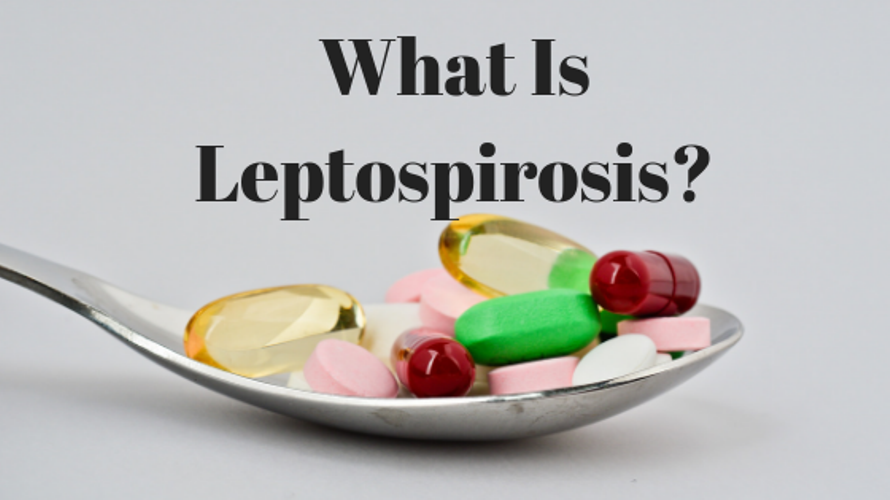 What is LEPTOSPIROSIS: Symptoms, Causes, Transmission, Treatments for a Common Disease in India What is LEPTOSPIROSIS: Symptoms, Causes, Transmission, Treatments for a Common Disease in India Facts about LEPTOSPIROSIS, without timely treatment, can lead to kidney damage, meningitis (inflammation of the membrane around the brain and spinal cord), liver failure, respiratory ... |
























